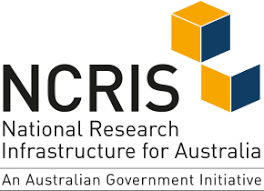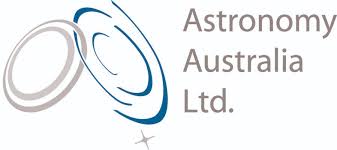CTA-Oz Meeting
CTA-Oz Meeting 2020
This meeting continues the regular series of CTA-Australia meeting to develop the links between Australian astronomy and the science of the next-generation TeV gamma-ray facility - the Cherenkov Telescope Array (CTA).
Due to the current situation, this will be a remote meeting!
Remote access: Zoom https://adelaide.zoom.us/j/99976976294
Please note that there is no registration fee for this event thanks to an NCRIS grant via Astronomy Australia Ltd. (AAL).


Keynote Speakers
TBD
Scientific Organising Committee
Gavin Rowell, Uni Adelaide, Australia
Sabrina Einecke, Uni Adelaide, Australia
Geoff Bicknell, ANU Canberra, Australia
Roland Crocker, ANU Canberra, Australia
Local Organising Committee
Gavin Rowell, Uni Adelaide
Sabrina Einecke, Uni Adelaide
Paddy McGee, Uni Adelaide
Roland Crocker, ANU
Geoff Bicknell, ANU
Talk durations
-
Invited talks: TBD
- Contributed talks: TBD
-
-
09:30
→
11:00
Public Session
-
09:30
CTA Status 20m
I will present a status report on CTA up to early 2020. This will include a look at the organisational perspectives from the CTA Consortium (CTAC) and the CTA Observatory (CTAO).
Speaker: Gavin Rowell (University of Adelaide) -
09:50
CTA-Australia: LIEF #3 Proposal and Science Plans 10m
I will outline our recently submitted ARC LIEF#3 proposal and plans to engage in CTA's science, from the CTA-Australia perspective.
Speaker: Gavin Rowell (University of Adelaide) -
10:00
SST Status 30m
This contribution will inform about the status of the SST-CAM project.
Speaker: Sabrina Einecke (The University of Adelaide, Australia) -
10:30
Project Update: Towards a Cherenkov Telescope Ring 30m
The extreme and often varying nature of Active Galactic Nuclei can be investigated by observations of very-high-energy gamma rays. Studying their long-term behaviour and flaring episodes requires the ability to take continuous observations over large spans of time. The Cherenkov Telescope Ring is thus a project to establish a worldwide network of Imaging Air Cherenkov Telescopes (IACT). This will allow for long-term continuous observations and 24-hour follow-up availability in case of transient events. Establishing a site in Australia will be crucial to obtain a full-sky coverage.
The performance of an IACT site depends on the number of telescopes, their layout, and their height. To investigate possibilities for an Australian site, simulations need to be made and analysed.
In this talk, the concept and science cases of a Cherenkov Telescope Ring will be introduced. The analysis pipeline for creating, processing, and evaluating the performance of telescope simulations will be described. Preliminary simulation comparisons will also be presented.Speaker: Simon Lee (University of Adelaide)
-
09:30
-
11:00
→
11:30
Morning Tea 30m
-
11:30
→
12:30
Public Session
-
11:30
Quantifying Potential Sites for Imaging Air Cherenkov Telescopes in Australia 30m
We describe briefly a survey of potential sites in Australia for establishing a small array of IACT for monitoring and follow-up purposes, concentrating on weather and environmental factors.
Speakers: Dr Paddy McGee (University of Adelaide), Sabrina Einecke (The University of Adelaide, Australia) -
12:00
Strange Case of Odd Radio Circle: ORCs Must Die 30m
We detected Odd Radio Circle (ORC) in between the LMC and MW. What is this perfectly circular object? Lost LMC SNR or strange BL-Lac? New radio observations are providing only some clues but we need X-ray, Gamma-rays and optical follow-ups.
Speaker: Miroslav Filipovic (Western Sydney University)
-
11:30
-
12:30
→
13:15
Lunch 45m
- 13:15 → 13:30
-
13:30
→
15:00
Public Session
-
13:30
GOTO - CTA-LST Activities on La Palma 15m
We will discuss proposed collaboration activities and joint observing plans on La Palma between the Gravitational-Wave Optical Transient Observer (GOTO) and CTA-LST. We will also give an update on potential science cases for joint observations as well as timeframes for scheduling the observations over the coming year.
Speaker: Kendall Ackley (Monash University) -
13:45
An Update on the GASKAP Pilot Survey 15m
I will present a brief overview of the GASKAP Survey that aims to map HI and OH throughout the Milky Way and Magellanic Clouds. I will give an update on the current plans and status of the GASKAP Pilot Survey, which is still ongoing.
Speaker: Katie Jameson (CSIRO) -
14:00
Simulations of the Morphology of HESS J1804-216 for Observations with HESS and CTA 30m
HESS J1804-216 is one of the brightest and most mysterious sources discovered and is currently classified as an unidentified source. To unveil the origin of its TeV gamma-ray emission, several scenarios have been considered. For the hadronic scenario, we focus on TeV gamma-ray emission produced by cosmic rays (CRs) from either the SNR G8.7-0.1 or the undetected progenitor of PSR J1803-2137. For the leptonic scenario, we focus on TeV gamma-ray emission produced by electrons from a pulsar wind nebula powered by PSR J1803-2137. From the modelled CR proton and electron spectra, we can model the gamma-ray flux maps. The gamma-ray flux maps are compared with measurements, using various model parameters and multiple sources as accelerators of CRs. These maps are also used to predict what both HESS and CTA might see. This allows us to investigate the observing conditions (observation time, zenith angle, offset angle etc) required for CTA. Comparing the morphology of these maps with observations may reveal the emission scenario. In this contribution, the measurements of the ISM will be summarised and the different emission scenarios will be discussed. Moreover, the simulated gamma-ray morphology will be compared to recent observations. More detailed features in the morphology may be resolved with the next-generation Cherenkov Telescope Array, which will provide unprecedented angular resolution and sensitivity.
Speaker: Kirsty Feijen (The University of Adelaide) -
14:30
Pre-Construction Estimates of the CTA Sensitivity to a Dark Matter Signal from the Galactic Centre 30m
This is a summary of the upcoming CTA Collaboration paper.
Speaker: Csaba Balazs (U Monash)
-
13:30
-
15:00
→
15:30
Afternoon Tea 30m
-
15:30
→
17:30
Public Session
-
15:30
Cosmic Probes of the Next Fundamental Scale of Nature 30m
The Standard Model by now is well-established as the most accurate fundamental description of nature. The next physical scale where quantitatively new phenomena are predicted by theoretical extrapolation of the Standard Model is related to non-perturbative electroweak physics. The current high-energy colliders are not sensitive to uncover a plethora of new physics phenomena. I will discuss the theoretical challenges of the consistent description of non-perturbative electroweak physics and potential cosmic probes for discovering new physics.
Speaker: Archil Kobakhidze (The University of Sydney) -
16:00
Cosmic-Ray Transport in Starburst Galaxies: Implications for Gamma-ray Spectra 30m
In this talk I introduce a new model for the mechanisms of cosmic ray transport in starburst galaxies. These galaxies are distinguished from galaxies such as the Milky Way by the overwhelming dominance of neutral molecular material that is subject to intense ion-neutral damping. This has profound consequences for cosmic ray propagation, producing a transport regime quite unlike that prevalent in the largely-ionised gas through which cosmic rays travel in the Milky Way. I show that a model accounting for the starburst regime can explain a number of otherwise puzzling features in the gamma-ray spectra of starbursts, in particular the observed break in spectral slope at ~1 TeV now detected in NGC 253 and M82. I then discuss further tests of the model that will become possible in the CTA era.
Speaker: Mark Krumholz (ANU) -
16:30
Cosmic-Ray feedback in Star-forming Galaxies 30m
Star formation proceeds inefficiently in galaxies for reasons that remain under debate. In the local ISM it is known that the cosmic rays (CRs) provide a significant fraction of total ISM pressure and therefore contribute to hydrostatic balance. I will set out a model for the dynamical effect of CRs, directly accelerated as a result of star formation itself, on the ISM gas column. On the basis of this model, I will explain how CR feed-back sets an ultimate limit to the star formation efficiency of most ‘ordinary’ galaxies (normal spirals and dwarfs). At the higher surface densities pertinent to star burst systems, however, pionic losses imply that CRs are dynamically unimportant on global scales while, at the same time, guaranteeing that such galaxies are luminous gamma-ray sources as will be described in the companion talk by Mark Krumholz.
Speaker: Roland Crocker (Australian National University) -
17:00
An Update from Armagh 30m
We will briefly report on two items: 1. An update will be given on the state of the Mopra CO survey of the Southern Galactic Plane. Data collection is complete, and data reduction continues. 2. Armagh is proposing to contribute an outreach programme to the UK-CTA consortium. This will involve a combination of short planetarium dome shows, video interviews and a social media programme.
Speakers: Kerem Cubuk (Armagh Observatory and Planetarium), Prof. Michael Burton (Armagh Observatory and Planetarium)
-
15:30
-
17:30
→
18:00
Discussion: Final Discussion & Close
-
09:30
→
11:00
